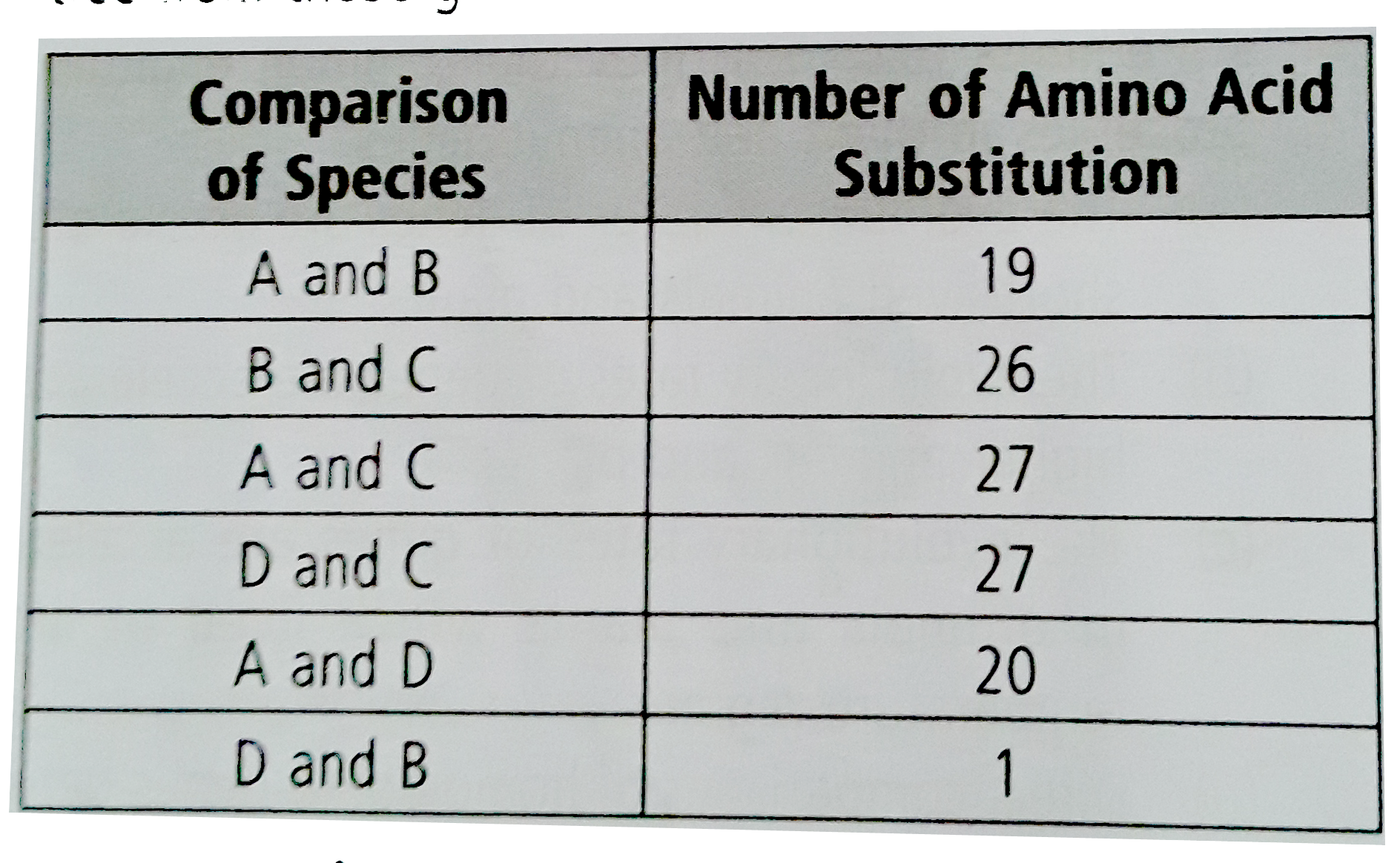The following picture is showing the amazed variety of architecutrue (sizes, shapes, designs) seen on the pollen grains from different species.

These micrographs are taken by
Scanning electron microscope
Transmission electron microscope
Phase-contrast microscope
Compound microscope
The correct Answer is:A
The pictures is showing the amazed variety of architecture (sizes, shapes, designs) seen on the pollen grains from different species. These micrographs are taken by scanning electron microscope.
Topper's Solved these Questions
- BOOK - A2ZCHAPTER - SEXUAL REPRODUCTION IN FLOWERING PLANTS EXERCISE - Section A: Topicwise Questions (topic :3 The Pistil, Megasporangium (ovule) And Embryo Sac)23videos
SEXUAL REPRODUCTION IN FLOWERING PLANTS
- BOOK - A2ZCHAPTER - SEXUAL REPRODUCTION IN FLOWERING PLANTS EXERCISE - Section A: Topicwise Questions (topic :4 Pollination)40videos
SEXUAL REPRODUCTION IN FLOWERING PLANTS
- BOOK - A2ZCHAPTER - SEXUAL REPRODUCTION IN FLOWERING PLANTS EXERCISE - Section D Chapter-end Test50videos
SEXUAL REPRODUCTION IN FLOWERING PLANTS
- BOOK - A2ZCHAPTER - REPRODUCTIVE IN ORGANISMSEXERCISE - Section D: Chapter-end Test50videos
REPRODUCTIVE IN ORGANISMS
- BOOK - A2ZCHAPTER - STRATEGIES FOR ENHANCEMENT IN FOOD PRODUCTIONEXERCISE - Section-d Chapter End Test50videos
STRATEGIES FOR ENHANCEMENT IN FOOD PRODUCTION
Similar Questions
Particle pollution (also called particulate matter or PM) is the term for a mixture of solid particles and liquid droplets found in the air. These particles come in many sizes and shapes and can be made up of hundreds of different chemicals. Some particles, known as primary particles are emitted directly from a source such as construction sites, unpaved roads, fields, smokestacks or fires. Others form in complicated reactions in the atmosphere of chemicals such as sulphur dioxides and nitrogen oxides that are emitted from power plants, industries and automobiles, these particles are known as secondary particles. Particles such as dust, dirt or smoke are large or dark enough to be seen with the naked eye. Others are so small that they can only be detected using an electron microscope. The size of particles is directly linked to their potential for causing health problems. Small particles less than 10 micrometres (0.01μm ) in diameter pose the greatest problems, because they can get deep into your lungs, and some may even get into your bloodstream. Exposure to such particles can affect both your lungs and your heart. Small particles of concern include those found near roadways and dusty industries, which are larger than 2.5 micrometres and smaller than 10 micrometres in diameter, and those found in smoke and haze, which are 2.5 micrometres in diameter and smaller.
What are the two main forms of particulate matter found in air?View SolutionRead the following passages carefully and answer the questions that follow.
The small village of Somnathpur contains an extraordinary temple, built around AD 1268 by the Hoyasalas of Karnataka- one of the most prolific temple builders, Belur and Helebid are among their better known works. While these suffered during the invasion of the 14th century, the Somnathpur temple stands more or less intact in near-original condition.
This small temple captivates with the beauty and vitality of its detailed sculpture, covering almost every inch of the walls, pillars and even ceilings. It has three shikharas and stands on a star shaped platform with 24 edges. The outer walls have a profusion of detailed carvings: the entire surface runs over by a carved plaque of stone. There were vertical panels covered by exquisite figures of Gods and Goddesses. Vishnu seemed the most popular, with many of his incarnations being depicted. Shiv, Brahma and Indra weren't left out and there were plenty of female deities too Durga and Saraswati. There were shapely nymphs too, some carrying an ear of maize. The elaborate ornamentation, very characteristic of Hoyasalas sculptures, was a remarkable feature. On closer look and it is worth it the series of friezes on the outer walls revealed intricately carved caparisoned elephants, charging horsemen, stylised flowers, warriors, musicians, crocodiles and swans. The temple was actually commissioned by Soma Dandanayaka or (Somnath), he named the temple after him, the minister of the Hoyasalas king, Narsimha the Third. The temple was built to house three versions of Krishna. The inner center of the temple was Kalyana Mandapa. Leading from here were three corridors, each ending in a shrine, one for each kind of Krishna-Venugopala, Janardana and Prasanna Keshava, though only two remain in their original form. In the darkness of the sanctum, I tried to discern the different images. The temple's sculptural perfection is amazing and it includes the doors of the temple and the three elegantly carved towers.
Whose incarnations were mainly and mostly seen?View Solution
Knowledge Check
- Question 1 - Select One
Pollen grains of different species show characteristic difference in
AShapes, size and colours onlyBShapes, sizers, colours and ploidy onlyCShapes, sizes, colour and design onlyDPloidy only - Question 2 - Select One
The following table shows the percentage distribution of students in various disciplines from five different colleges

What is the percentage of students from the discipline of mathematics for colleges A and C taken together,A37.5B37.2C36.9D36.7 - Question 3 - Select One
Following table shows data on amino acid substitution in the α chain of haemoglobin in four different mammalian species A,B,C and D on the basis of the data shown in the table. Choose the most appropriate evolutionary tree from those given below.
 A
A B
B C
C D
D
Read the following passages carefully and answer the questions that follow.
The small village of Somnathpur contains an extraordinary temple, built around AD 1268 by the Hoyasalas of Karnataka- one of the most prolific temple builders, Belur and Helebid are among their better known works. While these suffered during the invasion of the 14th century, the Somnathpur temple stands more or less intact in near-original condition.
This small temple captivates with the beauty and vitality of its detailed sculpture, covering almost every inch of the walls, pillars and even ceilings. It has three shikharas and stands on a star shaped platform with 24 edges. The outer walls have a profusion of detailed carvings: the entire surface runs over by a carved plaque of stone. There were vertical panels covered by exquisite figures of Gods and Goddesses. Vishnu seemed the most popular, with many of his incarnations being depicted. Shiv, Brahma and Indra weren't left out and there were plenty of female deities too Durga and Saraswati. There were shapely nymphs too, some carrying an ear of maize. The elaborate ornamentation, very characteristic of Hoyasalas sculptures, was a remarkable feature. On closer look and it is worth it the series of friezes on the outer walls revealed intricately carved caparisoned elephants, charging horsemen, stylised flowers, warriors, musicians, crocodiles and swans. The temple was actually commissioned by Soma Dandanayaka or (Somnath), he named the temple after him, the minister of the Hoyasalas king, Narsimha the Third. The temple was built to house three versions of Krishna. The inner center of the temple was Kalyana Mandapa. Leading from here were three corridors, each ending in a shrine, one for each kind of Krishna-Venugopala, Janardana and Prasanna Keshava, though only two remain in their original form. In the darkness of the sanctum, I tried to discern the different images. The temple's sculptural perfection is amazing and it includes the doors of the temple and the three elegantly carved towers.
Which female deities could also be seen?View SolutionConsider the following statements with respect to the flowering plants and choose the correct option (a) Pollen grains represent the male gametes (b) Functional megaspore develops innto embryo sac that represents the female gamete (c) Transfer of pollen grains from anther to stigma of different plant is known as xenogamy (d) Transfer of pollen grains from anther to stigma of another flower of the same plant is known as geitonogamy
View SolutionThe following pie-chart shows the study-time of different subjects of a student in a day. Study the pie-chart and answer the following questions

Instead of 10%, if the student spends 15% of study other subjects and the time is taken from the time scheduled to study mathematics and if he / she used to study 20 hours per day, then the difference of time for studying mathematics per day is :View SolutionConsider the following statements with respect to the flowering plants and choose the correct option (a) Pollen grains represent the male gametes (b) Functional megaspore develops innto embryo sac that represents the female gamete (c) Transfer of pollen grains from anther to stigma of different plant is known as xenogamy (d) Transfer of pollen grains from anther to stigma of another flower of the same plant is known as geitonogamy
View SolutionRead the source given below and answer the following questions:
Parties put forward different policies and programmes and the voters choose from them. Each of us may have different opinions and views on what policies are suitable for the society. But no government can handle such a large variety of views. In a democracy, a large number of similar opinions have to be grouped together to provide a direction in which policies can be formulated by the governments. This is what the parties do. A party reduces a vast multitude of opinions into a few basic positions which it supports. A government is expected to base its policies on the line taken by the RULING PARTY.
Answer the following MCQs by choosing the most appropriate answers:
Ruling party means ............View Solution

